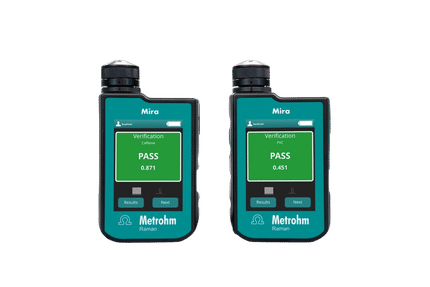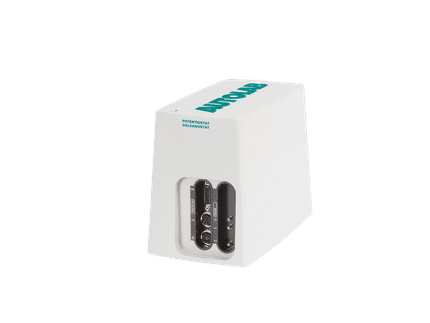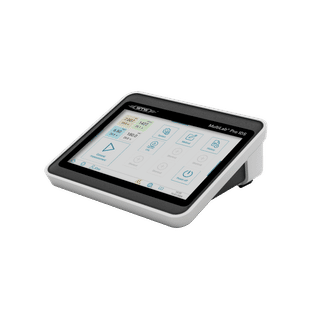Oral contraceptive formulations
Oral contraceptives come in a variety of formulations. The main division is between combined oral contraceptive pills, containing both estrogen and synthetic progestogens (strictly progestins, the term used in the United States, but the former term is used in the United Kingdom), and progestogen only pills (mini-pills). Combined oral contraceptive pills also come in varying types, including varying doses of estrogen, and whether the dose of estrogen or progestogen changes from week to week.
How they work
Combination pills usually work by preventing a woman's ovaries from releasing eggs (ovulation). They also thicken the cervical mucus, which keeps sperm from joining with an egg. The hormones in combination and progestogen-only pills also thin the lining of the uterus. In theory, this could prevent pregnancy by interfering with implantation of a blastocyst.
Combined oral contraceptive pills
All contain an estrogen, ethinyl estradiol or mestranol (the inactive 3-methyl ether of ethinyl estradiol, which must be metabolized by the liver into the active ethinyl estradiol; 50 µg of mestranol is equivalent to only 35 µg of ethinyl estradiol and should not be used when high-dose (50 µg ethinyl estradiol) estrogen pills are needed; mestranol was the estrogen used in the first oral contraceptive, Enovid)[1][2], although in varying amounts, and one of a number of different progestogens. They are usually taken for 21 days with then a 7 day gap during which a withdrawal bleed (often, but incorrectly, referred to as a menstrual period) occurs. These differ in the amount of estrogen given, and whether they are monophasic (only one dose of estrogen and progestogen during the 21 days) or multiphasic (varying doses). The introduction of extended-cycle monophasic pills (i.e. Seasonale) has shown that the menstrual intervals can be decreased.
Monophasic
These are typically given as 21 tablets of estrogen and progestogen, followed by 7 tablets of placebo or an iron supplement, although some newer formulations contain more active tablets and fewer placebos. Everyday regimens (Microgynon 30 ED, Femodene ED, Logynon ED), which include seven inactive placebo pills, are rarely used in UK practice.[3] Different formulations contain different amounts of estrogen and progestogen:
- 20 µg ethinyl estradiol
- 1000 µg norethindrone acetate (UK: Loestrin 20, Galen; US: Loestrin 1/20, Duramed; Microgestin 1/20, Watson; Junel 1/20, Barr)
- 1000 µg norethindrone acetate — 24 days + 4 days ferrous fumarate only (US: Loestrin 24 Fe, Warner Chilcott)
- 90 µg levonorgestrel — continuous: 365 days/year, no placebo (US: Lybrel, Wyeth)
- 100 µg levonorgestrel (US: Alesse, Wyeth; Aviane, Barr; Lessina, Barr; Lutera, Watson; Sronyx, Watson)
- 150 µg desogestrel (UK: Mercilon, Organon)
- 150 µg desogestrel — 21 days + 2 days placebo + 5 days 10 µg ethinyl estradiol only (US: Mircette, Duramed; Kariva, Barr)
- 75 µg gestodene (UK: Femodette, Bayer)
- 3000 µg drospirenone — 24 days + 4 days placebo (US: Yaz, Bayer)
- 30 µg ethinyl estradiol
- 1500 µg norethindrone acetate (UK: Loestrin 30, Galen; US: Loestrin 1.5/30, Duramed; Microgestin 1.5/30, Watson; Junel 1.5/30, Barr)
- 300 µg norgestrel (US: Lo/Ovral, Wyeth; Low-Orgestrel, Watson; Cryselle, Barr)
- 150 µg levonorgestrel (UK: Ovranette, Wyeth; Microgynon 30, Microgynon 30 ED, Bayer; US: Nordette, Duramed; Levora, Watson; Portia, Barr)
- 150 µg levonorgestrel — extended cycle: 84 days + 7 days placebo (US: Seasonale, Duramed; Quasense, Watson; Jolesa, Barr)
- 150 µg levonorgestrel — extended cycle: 84 days + 7 days 10 µg ethinyl estradiol only (US: Seasonique, Duramed)
- 150 µg desogestrel (UK: Marvelon, Organon; US: Desogen, Organon; Ortho-Cept, Ortho-McNeil; Apri, Barr)
- 75 µg gestodene (UK: Femodene, Femodene ED, Bayer; Minulet, Wyeth)
- 3000 µg drospirenone (US: Yasmin, Bayer)
- 35 µg ethinyl estradiol
- 400 µg norethindrone — chewable, spearmint flavor (US: Femcon Fe, Warner Chilcott)
- 400 µg norethindrone (US: Ovcon 35, Warner Chilcott; Balziva, Barr)
- 500 µg norethindrone (UK: Ovysmen, Janssen-Cilag; Brevinor, Pfizer; US: Modicon, Ortho-McNeil; Brevicon, Watson; Nortrel 0.5/35, Barr)
- 1000 µg norethindrone (UK: Norimin, Pfizer; US: Ortho-Novum 1/35, Ortho-McNeil; Norinyl 1/35, Watson; Necon, Watson; Nortrel 1/35, Barr)
- 1000 µg ethynodiol diacetate (US: Demulen 1/35, Pfizer; Zovia 1/35, Watson; Kelnor, Barr)
- 250 µg norgestimate (UK: Cilest, Janssen-Cilag; US: Ortho Cyclen, Ortho-McNeil; MonoNessa, Watson; Sprintec, Barr)
- 2000 µg cyproterone acetate — only for severe acne or severe hirsutism (UK: BAN of Co-cyprindiol sold as Dianette, Bayer)
- 50 µg mestranol (equivalent to 35 µg ethinyl estradiol)
- 1000 µg norethindrone (UK: Norinyl-1, Pfizer; US: Ortho-Novum 1/50; Ortho-McNeil; Norinyl 1/50, Watson; Necon 1/50, Watson)
- 50 µg ethinyl estradiol
- 1000 µg norethindrone (US: Ovcon 50, Warner Chilcott)
- 1000 µg ethynodiol diacetate (US: Demulen 1/50, Pfizer; Zovia 1/50, Watson)
- 500 µg norgestrel (US: Ogestrel, Watson)
Multiphasic
- 25 µg ethinyl estradiol — triphasic
- ethinyl estradiol/norgestimate combination with 7 tablets 25 µg/180 µg, 7 tablets 25 µg/215 µg, 7 tablets 25 µg/250 µg followed by 7 placebos (Ortho Tri-Cyclen Lo, Ortho-McNeil)
- ethinyl estradiol/desogestrel combination with 7 tablets 25 µg/100 µg, 7 tablets 25 µg/125 µg, 7 tablets 25 µg/150 µg, followed by 7 tablets of ferric oxide (US: Cyclessa, Organon; Velivet, Barr)
- 20/30/35 µg ethinyl estradiol — estrophasic
- ethinyl estradiol/norethindrone acetate combination with 5 tablets 20 µg/1000 µg, 7 tablets 30 µg/1000 µg, 9 tablets 35 µg/1000 µg, followed by 7 tablets of ferrous fumarate 75 mg (US: Estrostep Fe, Warner Chilcott)
- 30/40/30 µg ethinyl estradiol — triphasic
- ethinyl estradiol/levonorgestrel combination with 6 tablets 30 µg/50 µg, 5 tablets 40 µg/75 µg, 10 tablets 30 µg/125 µg (UK: Trinordiol, Wyeth; Logynon, Logynon ED, Bayer; US: Triphasil, Wyeth; Trivora, Watson; Enpresse, Barr)
- ethinyl estradiol/gestodene combination with 6 tablets 30 µg/50 µg, 5 tablets 40 µg/70 µg, 10 tablets 30 µg/100 µg (UK: Triadene, Bayer; Tri-Minulet, Wyeth)
- 35 µg ethinyl estradiol — triphasic
- ethinyl estradiol/norethindrone combination with 7 tablets 35 µg/500 µg, 9 tablets 35 µg/1000 µg, 5 tablets 35 µg/500 µg (UK: Synphase, Pfizer; US: Tri-Norinyl, Watson; Leena, Watson)
- ethinyl estradiol/norethindrone combination with 7 tablets 35 µg/500 µg, 7 tablets 35 µg/750 µg, 7 tablets 35 µg/1000 µg (UK: TriNovum, Janssen-Cilag; US: Ortho-Novum 7/7/7, Ortho-McNeil; Necon 7/7/7, Watson; Nortrel 7/7/7, Barr)
- ethinyl estradiol/norgestimate combination with 7 tablets 35 µg/180 µg, 7 tablets 35 µg/215 µg, 7 tablets 35 µg/250 µg followed by 7 placebos (Ortho Tri-Cyclen, Ortho-McNeil; TriNessa, Watson; Tri-Sprintec, Barr)
- 35 µg ethinyl estradiol — biphasic
- ethinyl estradiol/norethindrone combination with 10 tablets 35 µg/500 µg, 11 tablets 35 µg/1000 µg, followed by 7 placebos (US: Ortho-Novum 10/11, Ortho-McNeil; Necon 10/11, Watson)
- ethinyl estradiol/norethindrone combination with 7 tablets 35 µg/500 µg, 14 tablets 35 µg/1000 µg (UK: BiNovum, Janssen-Cilag)
Progestogen only pills
Progestogen only pills (POPs) use progestogen alone with doses taken continuously and no gap between packs taken. Women may experience irregular light bleeds on POPs, and whilst irregular in the first few months of taking, usually settles to a regular pattern in time.
The following progestogens are used:
- 350 µg norethindrone (UK: Micronor, Janssen-Cilag; Noriday, Pfizer; US: Micronor, Ortho-McNeil; Nor-QD, Watson; Nora-BE, Watson; Jolivette, Watson; Camila, Barr; Errin, Barr)
- 500 µg ethynodiol diacetate (UK: Femulen, Pfizer)
- 30 µg levonorgestrel (UK: Norgeston, Bayer)
- 75 µg desogestrel (UK: Cerazette, Organon)
References
- ^ Hatcher, Robert A.; Nelson, Anita (2004). "Combined Hormonal Contraceptive Methods", in in Hatcher, Robert A. (ed.): Contraceptive Technology, 18th rev. ed., New York: Ardent Media, pp. 391-460. ISBN 0-9664902-5-8.
- ^ Speroff, Leon; Darney, Philip D. (2005). "Oral Contraception", A Clinical Guide for Contraception, 4th ed., Philadelphia: Lippincott Williams & Wilkins, pp. 21-138. ISBN 0-7817-6488-2.
- ^ FFPRHC (2007). Clinical Guidance: First Prescription of Combined Oral Contraception. Retrieved on 2007-07-07.
| Birth control |
|---|
| Behavioral: | Avoiding vaginal intercourse: Anal sex, Oral sex, Non-penetrative sex, Masturbation, Abstinence
Including vaginal intercourse: Fertility awareness, Rhythm Method, Withdrawal, Breastfeeding infertility |
|---|
| Barrier: | Condom, Female condom, Diaphragm, Lea's shield, Cervical cap |
|---|
| Spermicide | Contraceptive sponge |
|---|
| Hormonal: | Combined: Combined oral contraceptive pill ('the Pill'), Contraceptive patch, NuvaRing
Progestogen only: Progestogen only pill ('minipill'), Depo-Provera, Norplant/Jadelle, Implanon |
|---|
| Anti-estrogen: | Ormeloxifene (a.k.a. Centchroman) |
|---|
| Intra-uterine: | IUD (copper or progestogen), IUS (progestogen) |
|---|
| Post-intercourse: | Contraception: Emergency contraception (pills or copper IUD)
Abortion: Surgical abortion, Medical abortion (RU-486/abortion pill) |
|---|
| Sterilization: | Male: Vasectomy
Female: Tubal ligation, Essure |
|---|
|







